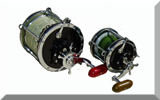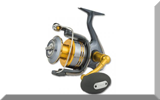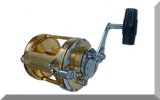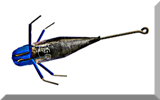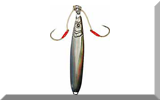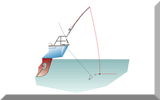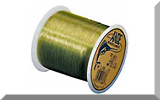Is the Saltwater Spinning Reel
|
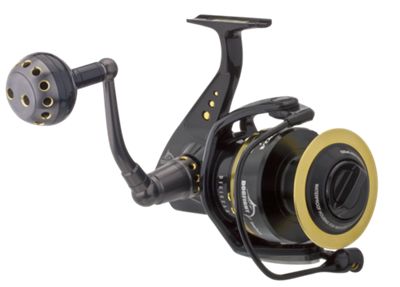 |
Take the excellent BLUESHARK Saltwater Spinning Reel This model is produced in five sizes, from a small 2000 through sizes 4000, 5000, 7000 to the largest model 8000. It's worth comparing the properties of the smallest and largest models. But what does it all mean |
.Spool Capacity (Mono): Spool Capacity (Braid): Ball Bearings: Maximum Drag: Gear Ratio: Recovery: Reel Weight (oz) |
CQR200010lb/110yds 10lb/120yds 10+1 12lbs 5.1:1 28 inches 9.9oz |
CQR8000
|
Spool Capacity
Gone are the days when saltwater spinning reel spools were so deep that they had to be loaded with miles of backing line. Now they are much shallower and profiled to suit the line size they're intended for.
Many reel manufacturers include a second spool in the price, so when you're comparing like-for-like models on a cost basis it's worth taking this into account. Changing spools can be done in a matter of seconds. There's no screws to worry about, just a single push-button.
Most anglers will find that two carefully selected saltwater spinning reels, together with a second spool for each and loaded with a different line size (and maybe line type), will meet all of their needs. It will be very useful if they can, as good quality saltwater spinning reels don't come cheap...
Reel size and line capacity are closely related, and are usually quoted in dia(mm)/capacity(m) and breaking strain(lb)/capacity(yds) for both nylon monofilament and the much thinner braid line.
Whichever type of line you use, you should fill the spool almost to the brim for maximum casting range.
Ball Bearings
Ball bearings will are necessary to give the main spindle stability and smoothness; any spinning reel worth its salt will have at least 2 sets.
The reel shown above is particularly well catered for with 10. Incidentally, the '+1' relates to the roller bearing, rather than a plain rotating bush on the bale arm. This is essential if line wear is to be avoided as the bale arm wraps the line around the fixed spool.
Maximum Drag
Drag is adjusted by a knob on either the front of the reel or the back. The front drag system is preferred for saltwater fishing as it's more directly applied to the spool and is consequently more powerful than a rear drag system. The larger the reel and the more powerful the fish, the more a front drag system will be appreciated.
In the example reel above, it will come as no surprise that the larger reel has the more powerful drag.
Gear Ratio and Recovery
The gear ration tells us the number of times the bale arm will rotate for each turn of the handle. Clearly the larger the spool diameter the greater the length of line that will be recovered for each turn of the spool.
Put another way, line recovery is related to the gear ratio and spool diameter
You can see that although the gear ration of the larger spinning reel is less than that of the smaller one, its rate of line recovery is much higher.
Caring for Your Saltwater Spinning Reel
Saltwater spinning reels are very robust and require little maintenance. However the following regime will ensure long-term reliability ...
- After a day' s seafishing, swill your spinning reel (or any other type of fishing reel) with fresh water and release the pressure on the drag. A regular spray of moisture repelling lubricant will do no harm at all.
- Every few weeks lightly oil or grease the reel's external moving parts, particularly the handles, the bale arm movement points and the roller.
- At least once a year dismantle the reel and thoroughly clean the various parts, then lubricate with light machine oil or a dab of reel lubricant, and carefully reassemble.
Looked after in this way, a high quality spinning reel may well last you a lifetime.
